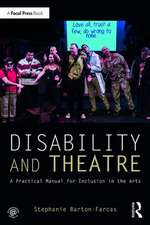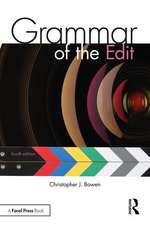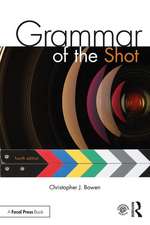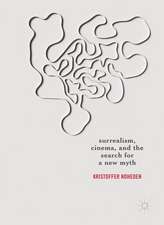Articles in English as a Second Language – A Phraseological Perspective
Autor Justyna Lesniewskaen Limba Engleză Paperback – 11 oct 2021
Preț: 349.81 lei
Nou
Puncte Express: 525
Preț estimativ în valută:
66.93€ • 69.89$ • 55.27£
66.93€ • 69.89$ • 55.27£
Carte tipărită la comandă
Livrare economică 15-29 aprilie
Preluare comenzi: 021 569.72.76
Specificații
ISBN-13: 9788323346913
ISBN-10: 8323346917
Pagini: 230
Dimensiuni: 149 x 206 x 13 mm
Greutate: 0.3 kg
Editura: Jagiellonian University Press
ISBN-10: 8323346917
Pagini: 230
Dimensiuni: 149 x 206 x 13 mm
Greutate: 0.3 kg
Editura: Jagiellonian University Press
Notă biografică
Justyna Le¿niewska
Cuprins
Introduction
Chapter 1
Articles: Descriptive approaches
1.1. Introduction
1.2. The classification of articles as parts of speech and sentences
1.3. The indefinite article
1.4. The definite article
1.5. The zero article / bare noun phrase
1.6. Conclusions
Chapter 2
Key concepts in the study of articles
2.1. Introduction
2.2. Reference
2.3. Information flow
2.4. Countability
2.4.1. The count / non-count distinction
2.4.2. Implications for L2 acquisition
2.4.3. Some uses of articles are very difficult to explain
2.5. Definiteness
2.6. Conclusions
Chapter 3
Other approaches to articles
3.1. Introduction
3.2. Socio-pragmatic approaches
3.3. Cognitive accounts of definite article use
3.4. The generative tradition
3.5. Corpus-based perspectives
3.6. Conclusions
Chapter 4
Articles as a source of difficulty in SLA
4.1. Introduction
4.2. Theoretical approaches to difficulty
4.2.1. Difficulty as cognitive complexity
4.2.2. Feature-related difficulty
4.2.3. Context-related difficulty
4.2.4. Learner-related difficulty
4.2.5. Some final words on objectivity
4.2.6. Articles and feature-related difficulty
4.2.7. Salience
4.2.8. Context- and learner-related difficulty
4.2.9. Language patterns versus metalinguistic propositions and rule difficulty
4.3. Implicit versus explicit learning and knowledge
4.4. Conclusions
4.4.1. High difficulty level
4.4.2. Implicit learning
4.4.3. Limited usefulness of metalinguistic propositions
Chapter 5
Articles in SLA research
5.1. Introduction
5.2. Crosslinguistic aspects
5.3. Semantic universals and the acquisition of articles
5.4. The sequence of acquisition of articles in L1 and L2 English
5.5. Studies on countability
5.6. Abstractness
5.7. Articles and learners¿ interim rules
5.8. Type of task
5.9. Lexical chunks
5.10. Conclusions
Chapter 6
Articles and ESL teaching
6.1. Introduction
6.2. Articles and the efficacy of corrective feedback
6.3. Other treatments and recommendations concerning the teaching of articles
6.4. The treatment of articles in teaching materials and pedagogical grammars
6.5. Conclusions
Chapter 7
Formulaicity
7.1 Introduction
7.2 Speaker-external formulaicity
7.3 Speaker-internal formulaicity
7.3.1 The idiom principle
7.3.2 Theoretical support for the formulaic nature of language processing
7.3.3 Empirical evidence supporting the formulaic nature of language processing in native speakers
7.4 Formulaicity, frequency and recent trends in linguistics
7.5 Formulaic language in L2 speakers
7.5.1 Speaker-external aspects
7.5.2 Speaker-internal aspects
7.6 Formulaicity and second language teaching: A brief history
7.7 Articles and formulaicity
7.8 Conclusions
Chapter 8
Investigating article use by advanced Polish learners of EFL: The role of formulaicity
8.1 Introduction
8.1.1 Purpose and rationale
8.1.2 Approach
8.2 Study 1
8.2.1 Participants
8.2.2 Instrument and procedure
8.2.3 Analysis, results and discussion
8.3 Study 2
8.3.1 Participants
8.3.2 Instrument and procedure
8.3.3 Results and discussion
Conclusion
References
Appendix 1
Appendix 2
Appendix 3
Chapter 1
Articles: Descriptive approaches
1.1. Introduction
1.2. The classification of articles as parts of speech and sentences
1.3. The indefinite article
1.4. The definite article
1.5. The zero article / bare noun phrase
1.6. Conclusions
Chapter 2
Key concepts in the study of articles
2.1. Introduction
2.2. Reference
2.3. Information flow
2.4. Countability
2.4.1. The count / non-count distinction
2.4.2. Implications for L2 acquisition
2.4.3. Some uses of articles are very difficult to explain
2.5. Definiteness
2.6. Conclusions
Chapter 3
Other approaches to articles
3.1. Introduction
3.2. Socio-pragmatic approaches
3.3. Cognitive accounts of definite article use
3.4. The generative tradition
3.5. Corpus-based perspectives
3.6. Conclusions
Chapter 4
Articles as a source of difficulty in SLA
4.1. Introduction
4.2. Theoretical approaches to difficulty
4.2.1. Difficulty as cognitive complexity
4.2.2. Feature-related difficulty
4.2.3. Context-related difficulty
4.2.4. Learner-related difficulty
4.2.5. Some final words on objectivity
4.2.6. Articles and feature-related difficulty
4.2.7. Salience
4.2.8. Context- and learner-related difficulty
4.2.9. Language patterns versus metalinguistic propositions and rule difficulty
4.3. Implicit versus explicit learning and knowledge
4.4. Conclusions
4.4.1. High difficulty level
4.4.2. Implicit learning
4.4.3. Limited usefulness of metalinguistic propositions
Chapter 5
Articles in SLA research
5.1. Introduction
5.2. Crosslinguistic aspects
5.3. Semantic universals and the acquisition of articles
5.4. The sequence of acquisition of articles in L1 and L2 English
5.5. Studies on countability
5.6. Abstractness
5.7. Articles and learners¿ interim rules
5.8. Type of task
5.9. Lexical chunks
5.10. Conclusions
Chapter 6
Articles and ESL teaching
6.1. Introduction
6.2. Articles and the efficacy of corrective feedback
6.3. Other treatments and recommendations concerning the teaching of articles
6.4. The treatment of articles in teaching materials and pedagogical grammars
6.5. Conclusions
Chapter 7
Formulaicity
7.1 Introduction
7.2 Speaker-external formulaicity
7.3 Speaker-internal formulaicity
7.3.1 The idiom principle
7.3.2 Theoretical support for the formulaic nature of language processing
7.3.3 Empirical evidence supporting the formulaic nature of language processing in native speakers
7.4 Formulaicity, frequency and recent trends in linguistics
7.5 Formulaic language in L2 speakers
7.5.1 Speaker-external aspects
7.5.2 Speaker-internal aspects
7.6 Formulaicity and second language teaching: A brief history
7.7 Articles and formulaicity
7.8 Conclusions
Chapter 8
Investigating article use by advanced Polish learners of EFL: The role of formulaicity
8.1 Introduction
8.1.1 Purpose and rationale
8.1.2 Approach
8.2 Study 1
8.2.1 Participants
8.2.2 Instrument and procedure
8.2.3 Analysis, results and discussion
8.3 Study 2
8.3.1 Participants
8.3.2 Instrument and procedure
8.3.3 Results and discussion
Conclusion
References
Appendix 1
Appendix 2
Appendix 3












